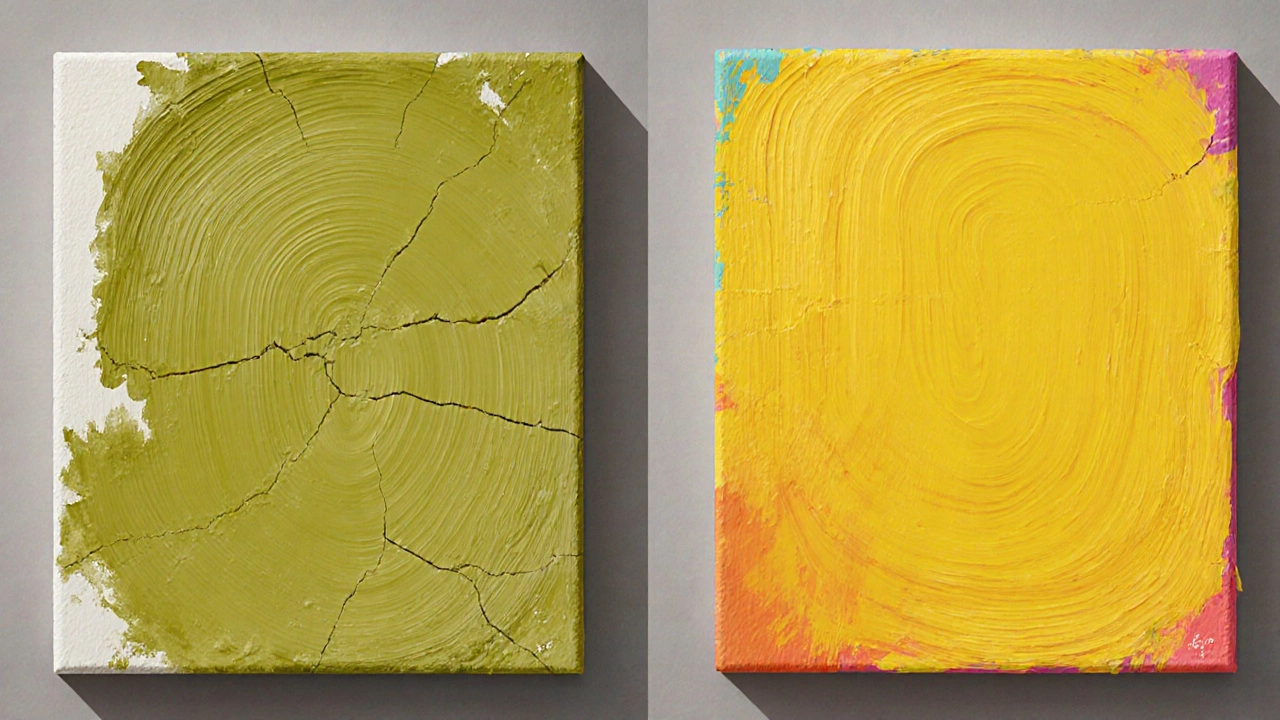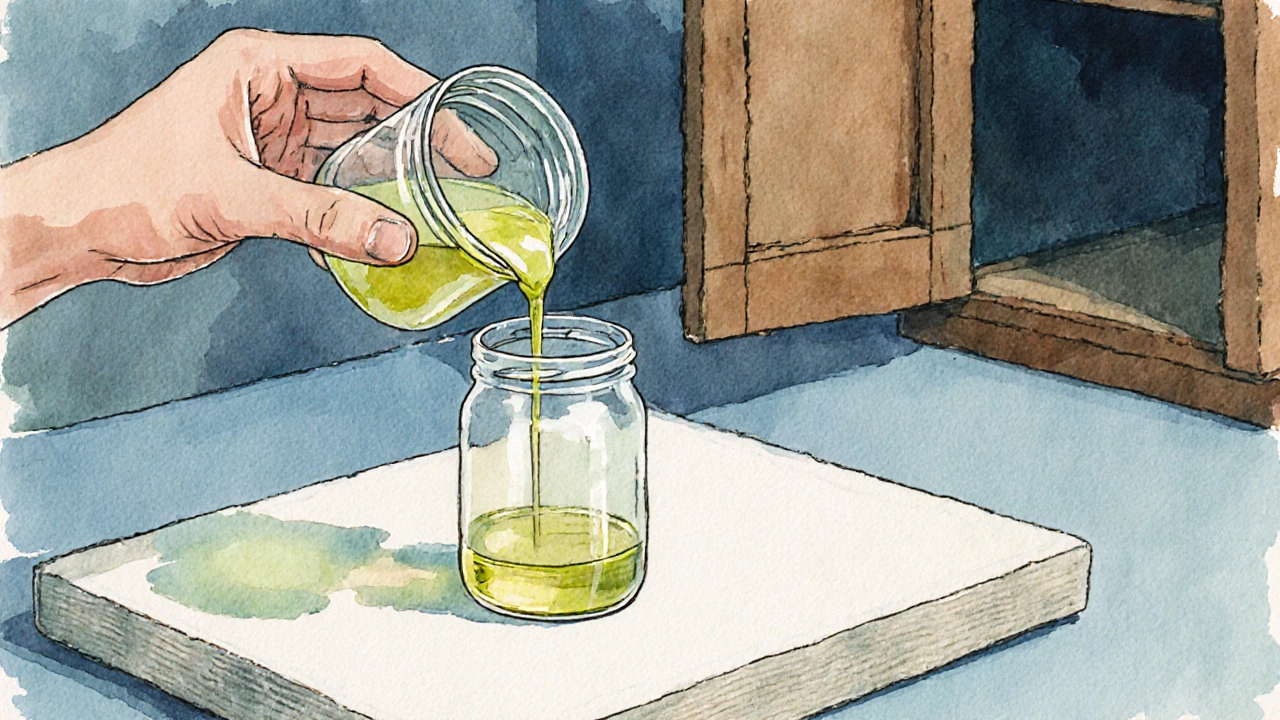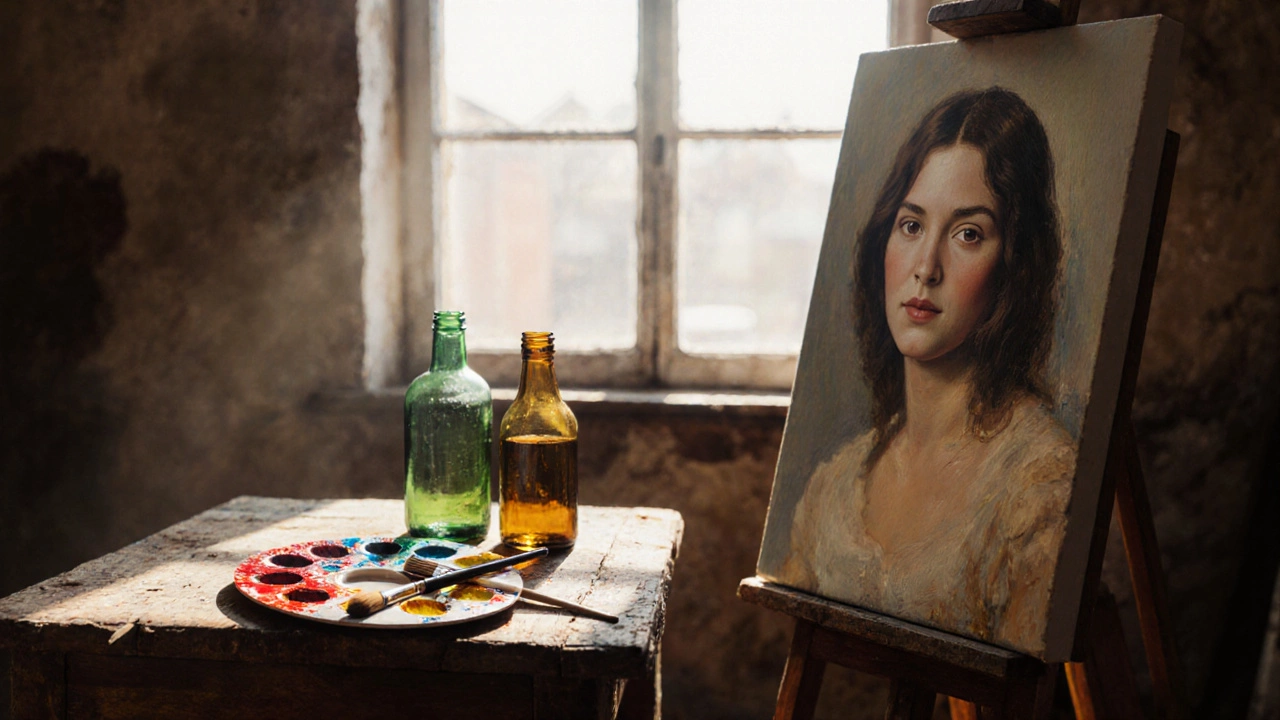Oil Painting Drying Time Calculator
Select Your Painting Medium
Painting Technique
Estimated Drying Time
When mixing paints, Olive oil is a vegetable oil extracted from olives, traditionally used in cooking but sometimes explored as a painting medium. The question on every hobbyist’s mind is whether that kitchen staple can replace the go‑to Linseed oil a drying oil obtained from flax seeds that has been the backbone of oil painting for centuries. Below you’ll find everything you need to decide if olive oil belongs in your studio palette or if it will jeopardize the longevity of your work.
Why the type of oil matters in oil painting
Oil paint is essentially pigment suspended in a drying oil. The oil performs three critical jobs:
- It binds the pigment particles together, forming a flexible film once the paint dries.
- It controls the flow and drying speed, influencing how you can blend and glaze.
- It affects the final gloss, color saturation, and durability of the paint layer.
Because the oil becomes part of the paint film, choosing the right one is not a cosmetic decision - it’s a structural one.
Olive oil vs. linseed oil: A side‑by‑side look
| Property | Olive oil | Linseed oil |
|---|---|---|
| Drying speed | Very slow (weeks to months) | Medium‑fast (5‑10 days for thin layers) |
| Yellowing tendency | Moderate - tends to darken over time | Low - lighter when polymerised |
| Fat over lean compatibility | Poor - high “fat” content can cause cracking | Excellent - standard for layered work |
| Rancidity risk | High - susceptible to oxidation especially in warm studios | Low - naturally polymerises into a stable film |
| Gloss & colour shift | Warm, slightly greenish hue | Neutral, does not alter pigment colour much |
The table makes it clear that while olive oil is edible and pleasant to smell, its physical properties diverge sharply from what oil painters need.
What happens when you actually paint with olive oil?
Artists who have experimented with olive oil report three main experiences:
- Extended wet time: The paint stays tacky for days, which can be fun for wet‑on‑wet techniques but makes it impossible to finish a piece in a usual timeframe.
- Yellowing and darkening: Over months, the oil oxidises and takes on a brown‑ish cast, especially on light pigments like cadmium yellow or titanium white.
- Potential cracking: If you later apply a lean layer (e.g., a thin glaze with less oil), the underlying “fat” layer can shrink unevenly, leading to surface cracks.
These issues are not just aesthetic - they can affect the structural integrity of the painting, making it less stable for museum‑level conservation.

Long‑term durability and conservation concerns
Conservators often cite two red flags for non‑drying oils:
- Fat over lean principle a rule that the upper layers of a painting must contain more oil (be “fatter”) than the layers beneath them. Olive oil breaks this rule because it is already “fat” and slows the polymerisation of any subsequent lean layers.
- Rancidity the breakdown of oil due to oxidation, producing off‑gasses and weakens the film. Rancid oil can lead to surface bloom, a sticky film that attracts dust and grime.
In a controlled studio environment, the effects may be subtle, but for works meant to survive decades, the risks outweigh the novelty.
Safer alternatives if you’re after a slower drying time
Instead of reaching for the kitchen, consider these artist‑tested options:
- Alkyd medium a synthetic drying oil that speeds up drying but can be blended with linseed oil for a balanced film.
- Walnut oil a natural drying oil with a slower cure than linseed and less yellowing. It’s popular among classical realist painters.
- Popcorn (or poppyseed) oil a very slow drying oil used for fine glazes, though it can be brittle if over‑used.
All of these maintain the “fat over lean” balance and have been proven to age well in museum collections.

How to use olive oil safely - if you still want to experiment
Should you decide to test olive oil in a small study, follow these guidelines to minimise damage:
- Mix olive oil with a reliable drying oil in a 1:1 ratio. The drying oil will kick‑start polymerisation.
- Add a small amount (5‑10%) of Turpentine a solvent that thins oil paint and speeds up evaporation. This reduces tackiness.
- Work on a primed surface that is already sealed with a coat of Artist’s varnish a protective film applied over a dried painting after the paint has fully cured (at least 6 months).
- Store the finished piece in a cool, dry place (below 20°C) to slow oxidation.
- Document the mixture and drying times for future reference - treat it as a lab experiment.
Even with these precautions, remember that you are creating a test piece, not a masterpiece intended for sale or exhibition.
Quick reference checklist
- Olive oil dries extremely slowly - plan for weeks or months.
- Expect moderate yellowing; avoid on light‑value areas.
- High risk of rancidity - keep the studio cool.
- Breaks the fat‑over‑lean rule - use only on topmost layers of a small study.
- Prefer established drying oils for final works.
Frequently Asked Questions
Will olive oil make my paint dry faster?
No. Olive oil is a non‑drying oil, so it actually slows the drying process dramatically.
Can I combine olive oil with linseed oil?
Yes, mixing the two in equal parts gives you a slower‑drying blend while still allowing the linseed component to polymerise and form a stable film.
Is olive oil safe for long‑term archival paintings?
Generally not recommended. Its tendency to yellow, crack, and become rancid makes it unsuitable for works that need to last decades.
What is a good alternative to achieve a slow‑drying effect?
Walnut oil or poppyseed oil are natural drying oils with slower cure times and less yellowing than linseed.
Do I need to varnish a painting that used olive oil?
Varnishing is essential to protect the surface, but it does not fix underlying stability issues caused by non‑drying oils.







